Protect Birds & Their Habitats
Birding
Protect Birds & Their Habitats
Birding
Treating invasive buffelgrass in Sonoran Desert habitat
What exactly is an Invasive Plant, and why should I care?
The United States Department of Agriculture defines an “invasive species” as “a species that is non-native (or alien) to the ecosystem under consideration, and whose introduction causes or is likely to cause economic or environmental harm or harm to human health”. No matter where you live, there is likely to be an invasive plant establishing a population near you, or on its way! Their seeds hitch rides in shoes, tires, trains, and boats. Invasives are sometimes sold as ornamental plants in local and big-box nurseries, and have even been introduced into our ecosystems as graze for cattle, causing landscape-scale destruction of native habitat.
Because invasive plants rarely have biocontrols–like bugs or mammals that feed on them–outside of their native ecosystems to keep them in check, they quickly establish and can easily outcompete native plants that create habitat for wildlife. This diminishes biodiversity and leaves us with a monoculture that does not benefit wildlife, and makes our time in nature less beautiful and exciting.
This is bad news for native plants and all of the bugs, birds, bats and other mammals–including us humans–that benefit from biodiverse ecosystems.
In some cases, such as with stinknet (Oncosiphon piluliferum, aka globe chamomile), invasive plants can pose human health risks by aggravating asthma and allergy symptoms. It, along with buffelgrass, also poses a significant threat to Sonoran Desert ecosystems by increasing fire risk, and resulting in hotter, more intense fires that move slowly across the landscape.
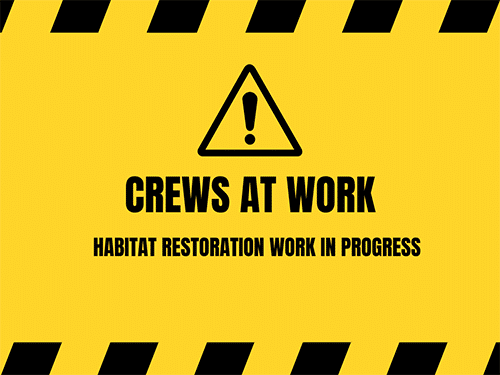
If you were directed to this page because you found a sign that says “CREWS AT WORK,” please do not approach the work crews and keep your distance as they may be operating heavy machinery, chainsaws, or strategically applying chemical to nearby plants. For your safety, please remain outside this work area. For questions or concerns, you may email info@tucsonaudubon.org.
Thank you!
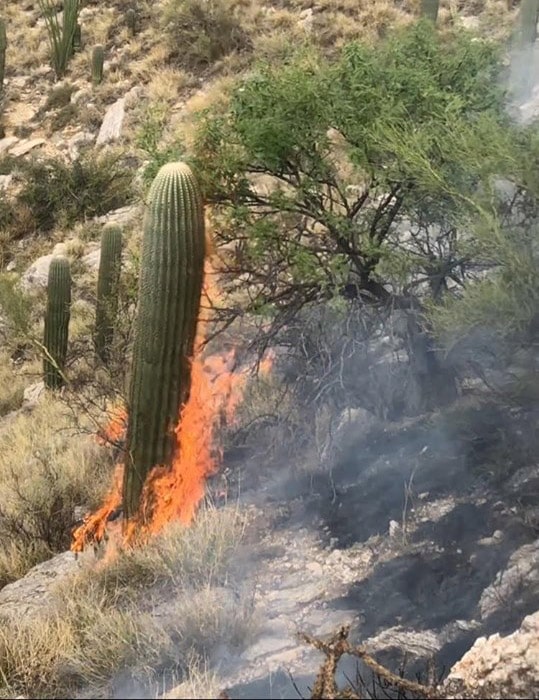
A saguaro alight in flames because it was surrounded by highly flammable, invasive buffelgrass is a deeply unsettling reality, for people, and the birds that rely on them for nesting in the breeding season, NPS
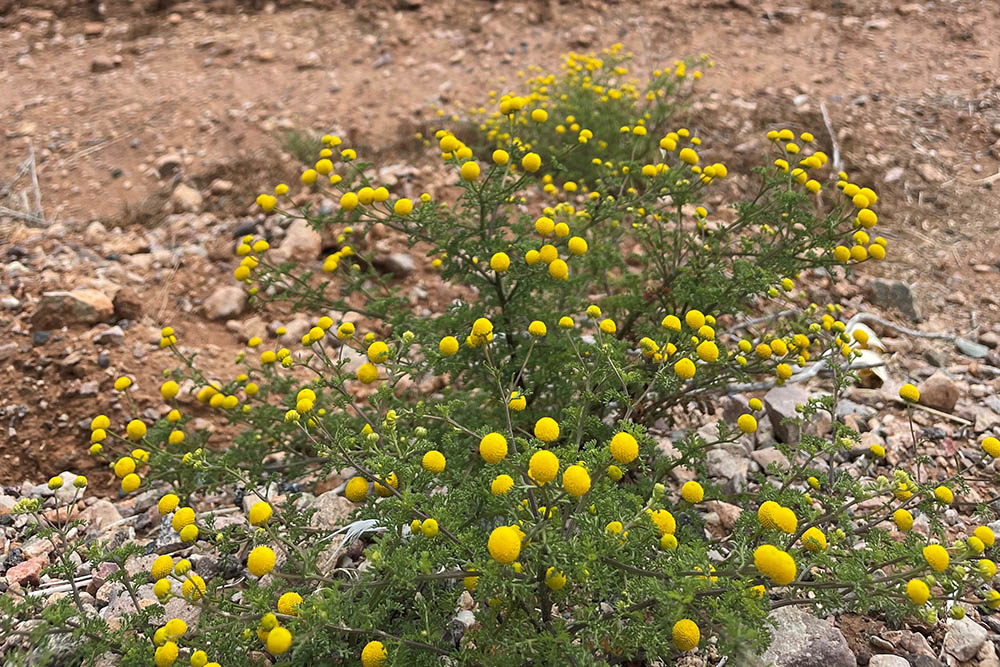
Stinknet (Oncosiphon piluliferum, aka globe chamomile) has overrun parts of Maricopa County. There is still time to control its spread in Pima County, Matt Griffiths
Why is Tucson Audubon Prioritizing Invasive Plant Management?
So why is a bird organization so focused on plants? Pretty simply, because the birds we love need the plants they love.
Between building collisions, feral cats, climate change, drought, and light pollution, being a bird is a really tough gig these days! We can’t sit idly by and watch the habitat they depend on get overrun with invasive plants–plants that we know will effectively eradicate beneficial insects and other food sources supported by native flora. Caring for and about birds means caring for and about the ecosystems they depend on.
We feel it is our responsibility not only to share information about invasive plants, but to tackle the issue at the root, working to remove it from the landscape by committing our trusty field crews to areas where the threat looms large over high-value bird habitat.
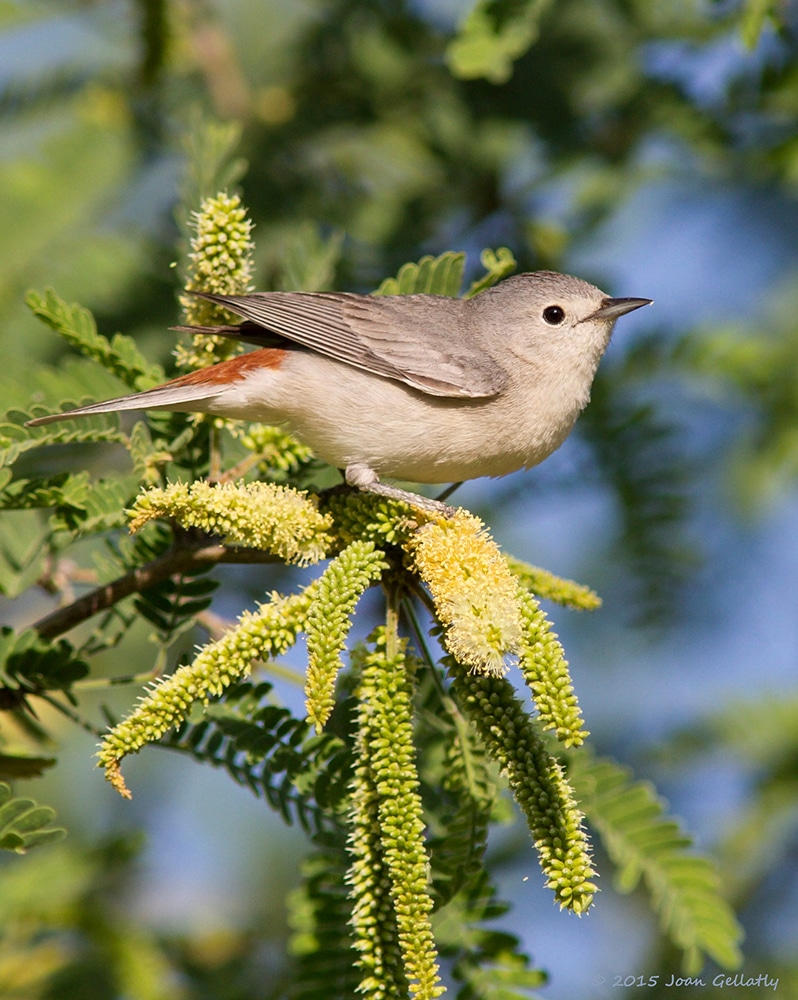
Lucy’s Warbler on velvet mesquite, Joan Gellatly
How do we approach Invasive Plant Management at Tucson Audubon?
Our Invasive Plants Program employs full-time crews that brave the elements year-round to remove invasive plants, and make every effort to restore native flora by re-seeding or planting native species. These habitat heroes are highly skilled, licensed professionals that employ a variety of tactics to get the job done. Tucson Audubon’s treatment philosophy is to use the most ecologically appropriate alternative available for each specific context, including:
Why Glyphosate? With the existing lawsuits against Monsanto (now called “Bayer”) and the inappropriate ways that RoundUp or other formulations of glyphosate are commonly used, people have a right to be concerned—the vast majority of the uses of these chemicals are unacceptable. Those uses (for instance, blanket spraying of crops or “weeds” in a community) are a far cry from the way we and our partners use it to target individual plants for the protection of our wild areas, natural heritage, and health and human safety.
Based on extensive research, we have determined that glyphosate is the least toxic (to the environment and our applicators) and most effective herbicide option available for certain invasive plants like buffelgrass, and our best chemical option to save Sonoran Desert habitat. Glyphosate is absorbed quickly into the plant and any that dries on the soil surface is quickly degraded by UV light. Because it kills the plant, the chemicals are not translocated into seeds that any birds would be eating, nor does it produce nectar that could be contaminated. As a non-native grass, there are very few insects that eat buffelgrass, stinknet, or vinca foliage and any that do will eat healthy growing material, not plants that are sprayed and rapidly drying up. Among larger mammals, native grasses are generally the preferred forage over buffelgrass due to its high silica content and coarse texture. This is often the case with other non-native plants that evolved in Africa under heavy grazing pressure and produce leaves that are less palatable to deter herbivory.
We don’t like using herbicides, and whenever possible we try to avoid it. However, along with all the other members of the Sonoran Desert Cooperative Weed Management Area (which includes the University of Arizona, local and federal agencies and municipal land managers, local tribes and conservation groups), we have determined that in many cases spot spraying—pinpoint herbicide application to individual invasive plants—is frequently the most ecologically sensitive and least damaging approach when considering all factors (things like erosion, germination from the residual seed bank, impacts to existing vegetation, and animals, including pollinators and people).
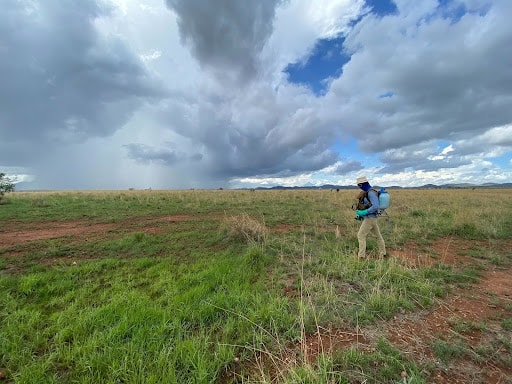
Invasives treatment in the Elgin grasslands, Jay Snowdon
Would you like to create habitat for birds where you live or work? Check out our Habitat at Home program! Did you somehow end up on this page but have never been birding before? Come out and join us! We would love to share our passion for birds and the places they live with you. Do you have invasive plants you’d like treated, hire us!
Literature about Invasives and the use of Glyphosate/herbicides in Invasive Plant Management: There is a LOT of information out there on the web about the use of herbicides. Tucson Audubon follows the science—we are a science-based organization, afterall.
This resource list will lead you to a wealth of scientifically sound, factual information about invasive plants and the methods used to control their spread.